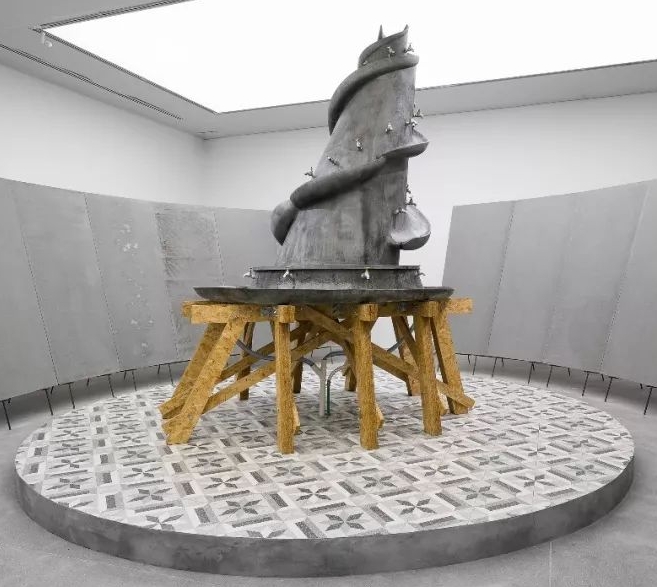|
|
小说(fiction)的部分魅力在于想象力和对现实重新组织的能力。从这种意义上来说,小说未必要依附于文字,一切虚构之物都可以是小说。《荒唐小说》是陆垒在上海的首次个展,他将多年来的记忆、感知和荒唐念头,以他拿手的装置与雕塑形式编织成了一部视觉小说。对陆垒来说,荒唐并不含有自嘲或反讽的意味,而是他心中艺术创作应有的样子。“艺术应该是荒唐的”,陆垒说。 The charm of "fiction" partly lies in the imagination and the ability to reorganize reality. In this sense, fiction does not have to be bound by the form of text. Anything based on imagination could be a fiction. The exhibition "Wander Giant" (Chinese title in English: "Absurd Fiction") is the first solo exhibition of Lu Lei in Shanghai. Lu Lei has woven years of memories, perceptions and absurd thoughts into a visual fiction with installations and sculptures. For Lu Lei, absurdity does not mean self-mockery or irony, but it is the way that artistic creation process should be. From the perspective of Lu Lei, "Art should be absurd." |
|
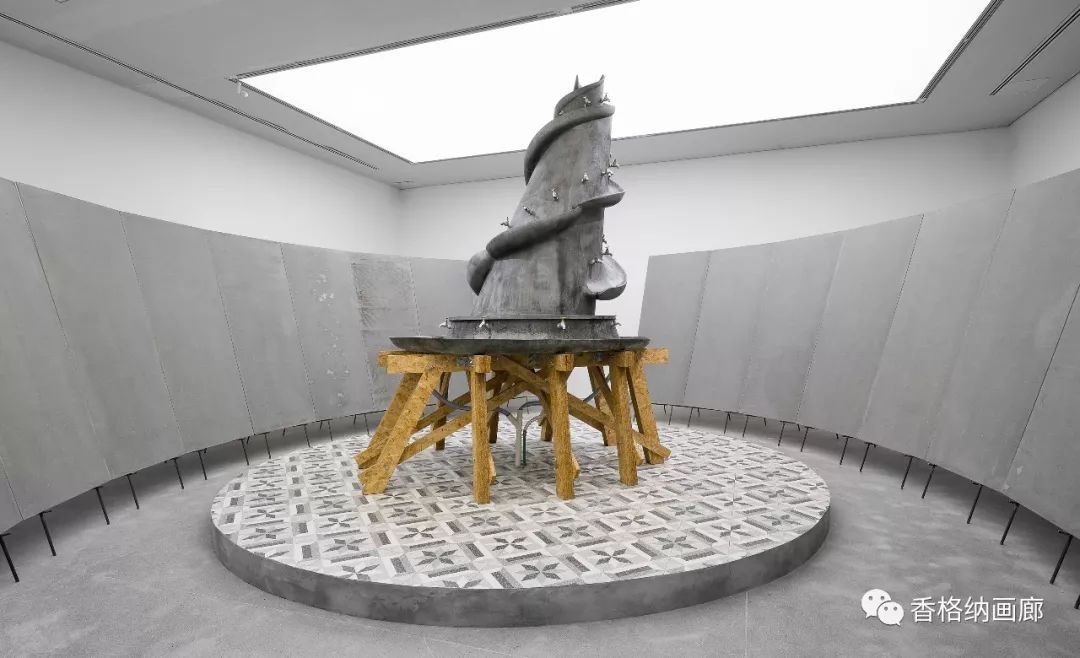
展览现场 Exhibition View
在《荒唐小说》中,陆垒勾画了一个“漫游的巨人的狂想”。如同集体主义之化身的庞大巨人,徜徉于记忆之梦的领地中,为白日的狂想赋予坚硬、冰冷的实体。那些散落的巨大物件与场景,如同梦的碎片,以其熟悉又陌生的姿态,吸引着误入此地的渺小人类。厂房、烟囱、蝙蝠、扩音喇叭……除了在其作品中反复出现的与儿时生活记忆有关的意象外,陆垒还将宇宙的、太空的维度纳入了作品之中,令展览呈现出更为开阔自由的格局,让人想起卡尔维诺《宇宙奇趣全集》中肆意疯狂的奇思妙想。当孤独的漫步者获得巨人的躯体,其遐想也随之千百倍地膨胀,将星辰与雷电玩弄于掌中,幻想的能量静静地溢出了雪白墙体围隔起的固有空间。
In "Wander Giant", Lu Lei depicts the "reveries of a wandering giant". The giant incarnation of collectivism, wander in dreamland of memories, rendering his farcical daydreaming into cold, hard bodies. The scattered huge objects and scenes are like the fragments of dreams, familiar yet strange at the same time, attracting petty humans who have accidentally entered this place. Factories, chimneys, bats, loudspeakers… in addition to these recurring images in his works related to childhood memories, Lu Lei incorporates dimensions of the universe and space into them, further expanding and freeing the exhibition space and calling to mind Calvino's Cosmicomics. When the solitary walker gains the body of a giant, his reveries expand exponentially, treating the stars and lightning as his toys, while the imaginative energy quietly overflows from the confined space surrounded by the white walls.

展览现场 Exhibition View
三个展厅如同小说的三个章节,分别展示了巨人的游戏、巨人的臆想、巨人的漫步三个架空主题。尽管陆垒并没有赋予“巨人”一个具体的形象,但通过将“巨人”作为主语置入叙事结构中,却使得这个庞然大物的影响力和印迹显得无处不在。观众穿行于三个展厅之间,丰富的意象游戏和开放性的叙事场景,让每个人都能在其中生产属于自己的故事。
The three exhibition halls are presented as three chapters of the novel, with imaginary themes of "Game of the Giants", "Reveries of the Giant", and "The Giant Walking". Although there is no specific image of the giant, by placing him as the subject in the narrative structure, Lu Lei embodies the influence and imprints of this behemoth everywhere. The audience walk through the halls, experiencing the varied games of imagery and open narrative scenes that enable them to produce their own stories.
第一章 巨人的游戏
Game of the Giants
在寒冬,巨人们聚集在广场中心,
用沙做的圆球按照星辰的方位,玩一种弹球游戏。
In the cold winter,
the giants gather at the center of the square,
playing marbles game with sand,
according to the direction of the stars.
在夏夜,巨人们用捕蝠器,召唤蝙蝠。
In the summer night,
the giants use bat catchers to attract bats.

展览现场 Exhibition View
《在寒冬,巨人们聚集在广场中心,用沙做的圆球按照星辰的方位,玩一种弹球游戏》这件作品,其标题就如同小说的片段,将极具故事性的画面带到观众眼前。用沙固定而成的大型浮雕,似大陆的板块般分散地置于地上,上面印刻着星图,四周散落着的沙球让人想起儿时玩耍的玻璃弹珠,然而其厚重的存在感和粗粝的材质却赋予了作品一种原始的神话性,仿佛某种远古遗迹。
In "In the cold winter, the giants gather at the center of the square, playing marbles game with sand, according to the direction of the stars", the title itself resembles a fragment from a novel, presenting a vividly telling picture to the audience. The large relief sculptures of sand molded with resin and engraved with atlases of constellations are scattered on the ground like the plates of continents. The sand balls scattered around are reminiscent of the glass marbles game that children play. However, its heavy presence and rough materials endow the work with a sense of primitive mythology, as if they were ancient relics.
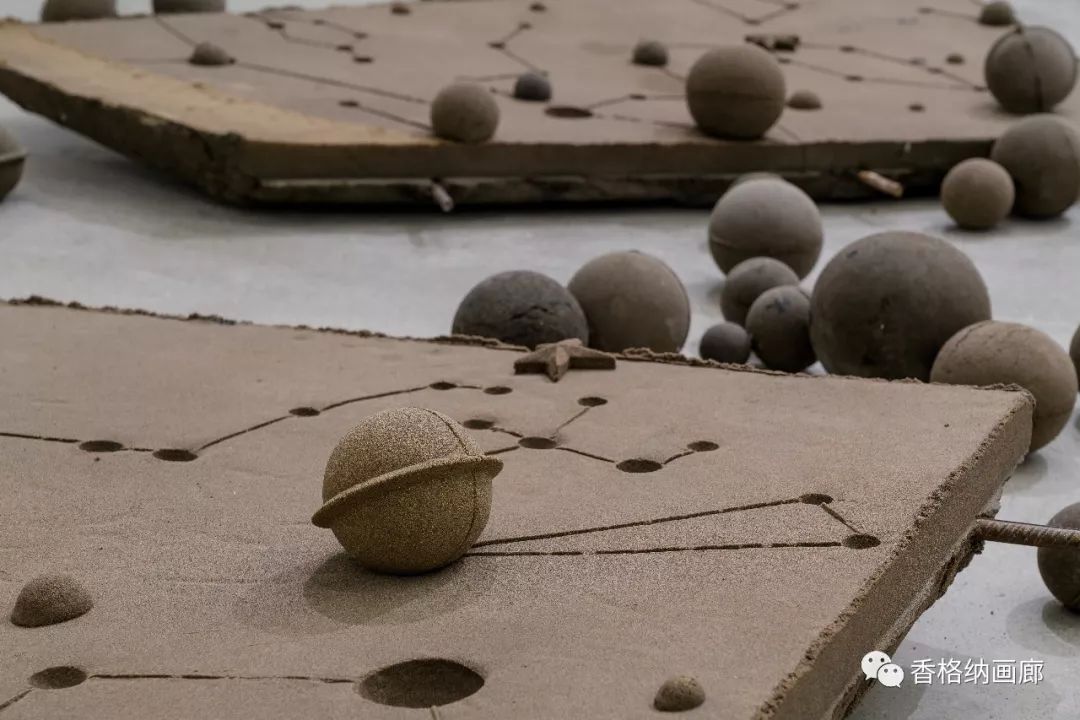

在寒冬,巨人们聚集在广场中心,用沙做的圆球按照星辰的方位,玩一种弹球游戏 In the cold winter, the giants gather at the center of the square, playing marbles game with sand, according to the direction of the stars., 2019 | 沙、钢筋,树脂定型 Sand, rebar, case-hardened resin | 尺寸可变,展示尺寸约 8*10m Dimension variable, approx 8m*10m for display | 7块沙盘 7 parts sand tables | 局部 Deatil
《在夏夜,巨人们用捕蝠器,召唤蝙蝠》则展示了巨人的另一项游戏——带有烟囱的苏联式厂房,被巨人当做捕捉蝙蝠的玩具。蝙蝠是陆垒常用的意象之一,来源于他儿时在化工部大院生活的记忆,废弃的工厂烟囱里住满了蝙蝠,漆黑的蝙蝠如黑烟般在高耸的圆筒中进出,使得工厂本身被剥离了其原始用途,仿佛变化为一个捕获蝙蝠的奇异装置。
"In the summer night, the giants use bat catchers to attract bats" shows another game of the giants – the Soviet-style factories with chimneys are used by the giants as a toy to catch bats. The bat is one of Lu Lei's frequently used elements, derived from memories of his childhood life in the chemical industry compound. The chimneys of the abandoned factories were full of dark bats, flying in and out through the towering cylinders like black smoke. For Lu Lei, the factories themselves were deprived of their original functions and turned into bizarre devices that captured bats instead.

在夏夜,巨人们用捕蝠器,召唤蝙蝠 In the summer night, the giants use bat catchers to attract bats | 2019 | 铸铝,腐蚀铸铝雕塑表面 Aluminum casting, corroded cast aluminum surface
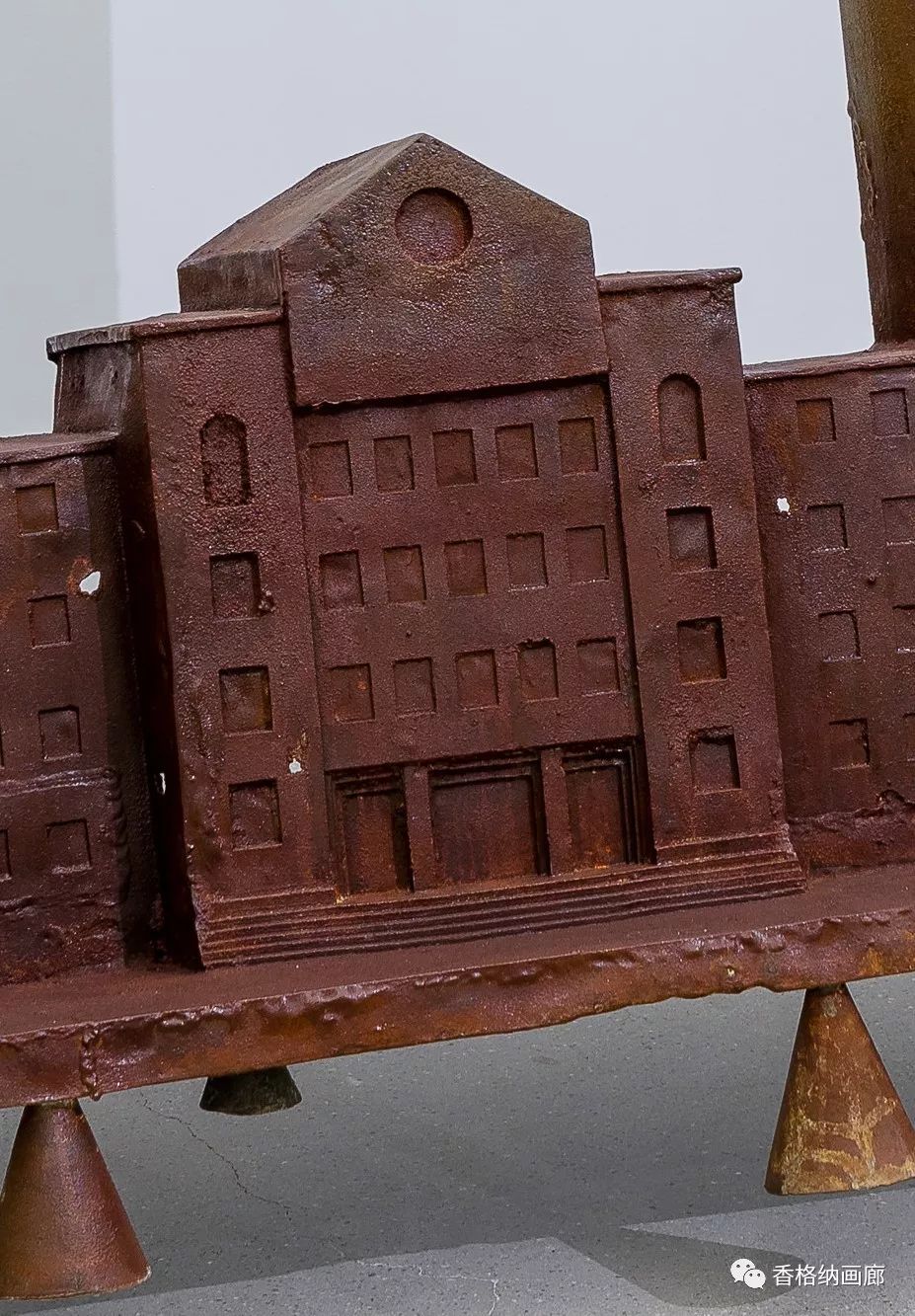

在夏夜,巨人们用捕蝠器,召唤蝙蝠 In the summer night, the giants use bat catchers to attract bats | 2019 | 局部 Detail
第二章 巨人的臆想
Reveries of the Giant
轰鸣万岁!
Long Live the Roar!
被闪电击中的W&H
W&H Were Hit by Lightning

展览现场 Exhibition View
《轰鸣万岁!》和《被闪电击中的W&H》展现了巨人的狂野臆想,并不实际存在于现场的轰鸣与雷电,以幻想的形式被召唤至此地,在精神层面施加给观众强有力的感官刺激。《轰鸣万岁!》让人想起陆垒的代表作之一《佯装自大狂》。作品由一左一右相对摆放的两件雕塑构成,敞口喇叭从缠绕状的耳蜗中延伸而出,如同具有思想的活物。它们面向彼此,既像是对抗的敌人,又仿佛是一族的同伴,观众从中听见的究竟是对话、争吵,亦或是对着虚空发出宣言?
"Long live the Roar!" and "W&H Were Hit by Lightning" show the wild reveries of the giant. The roar and the thunder that do not actually happen on site are summoned here in a form of fantasy, exerting a powerful sensory stimulation on the audience on a spiritual level. "Long live the Roar!" is reminiscent of one of Lu's masterpieces "Pretending Egomania". The work consists of two sculptures placed opposite to each other. The open “speakers” extend from the entangled cochleae like living creatures with thoughts. The two sculptures face each other, either as enemies of confrontation or as comrades of a group. What will the audience hear from them? A dialogue, a quarrel, or a declaration against the void?
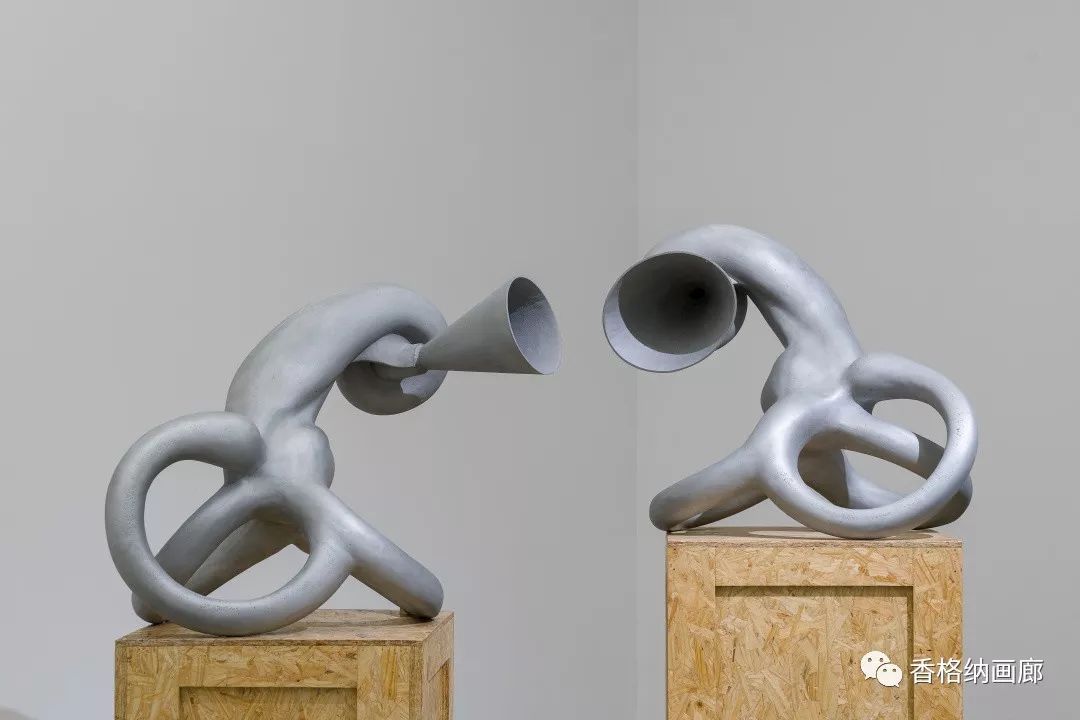
轰鸣万岁!Long Live the Roar! | 2019 | 铸铝、欧松板基座 Aluminum casting, oriented strandboard base | 2 pieces | L: 73*88*70cm, Base 115cm(H) | R: 72*80*57cm, Base 131cm(H)
《被闪电击中的W&H》采用了铝、铜、榉木和玻璃等多种材质,同样以成对的形式呈现,两座巨大的半身像立于圆台之上,围绕着“头部”延伸出的金属尖刺使其成为一个天然的引雷装置,仿佛来自天外的闪电才是唯一点亮它的方法。作品名中的W和H,来自“王”和“后”的汉语首字母,却又偶然地契合了英语中夫妻(Husband & Wife)的缩写,让人对作品中两位“主角”的关系有了更丰富的遐想。
“W&H Were Hit by Lightning" uses a variety of materials such as cast aluminum, copper, beech and glass, also presented in pairs. Two huge busts stand on the round table; the metal spikes that extend from the "heads" make them natural lightning conductors, as if lightning from the sky was the only way to light them up. The W and H in the title of the work come from the Chinese initials of "King (Wang)" and "Queen (Hou)" and at the same time accidentally match those of “Husband & Wife” in English. It gives the audience the chance to further wonder about the relationship between the two "protagonists" in this work.

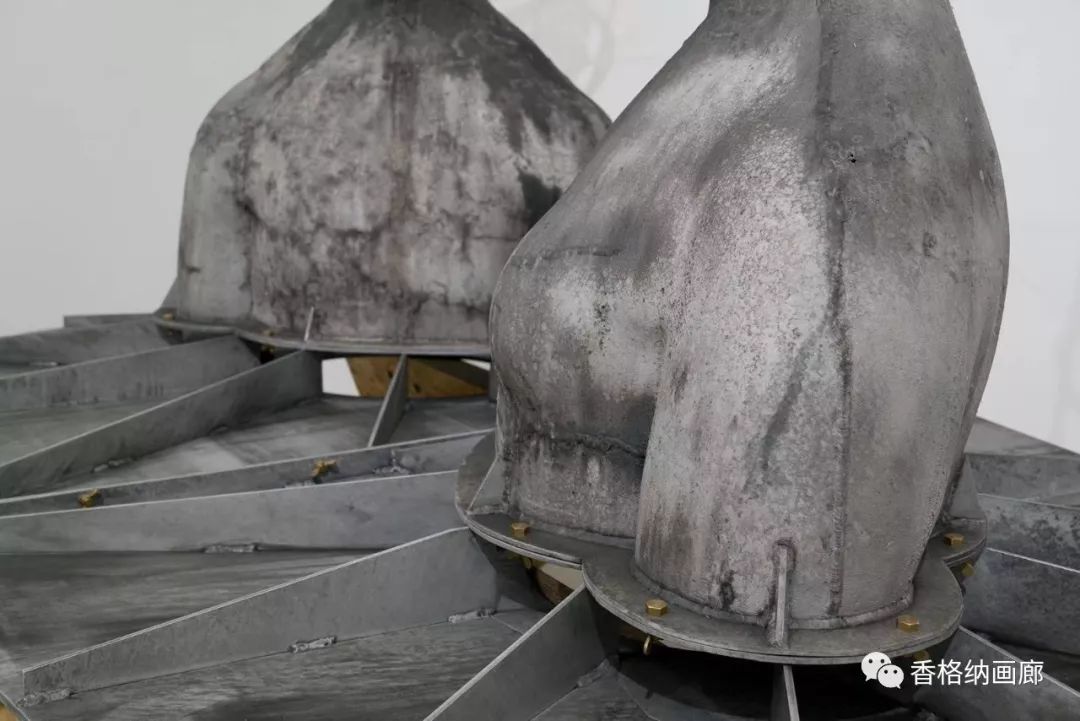
被闪电击中的W&H W&H Were Hit by Lightning | 2019 | 铸铝、铜、榉木、玻璃、橡胶圆片、欧松板基座 Aluminum casting, copper, beech, glass, rubber wafer and oriented strandboard base | 210(H)*300(W)*204cm, Base 103cm(H)
第三章 巨人的漫步
The Giant Walking
圆括号长廊与卫生池
The Parentheses Corridor and Hand Washing Basins
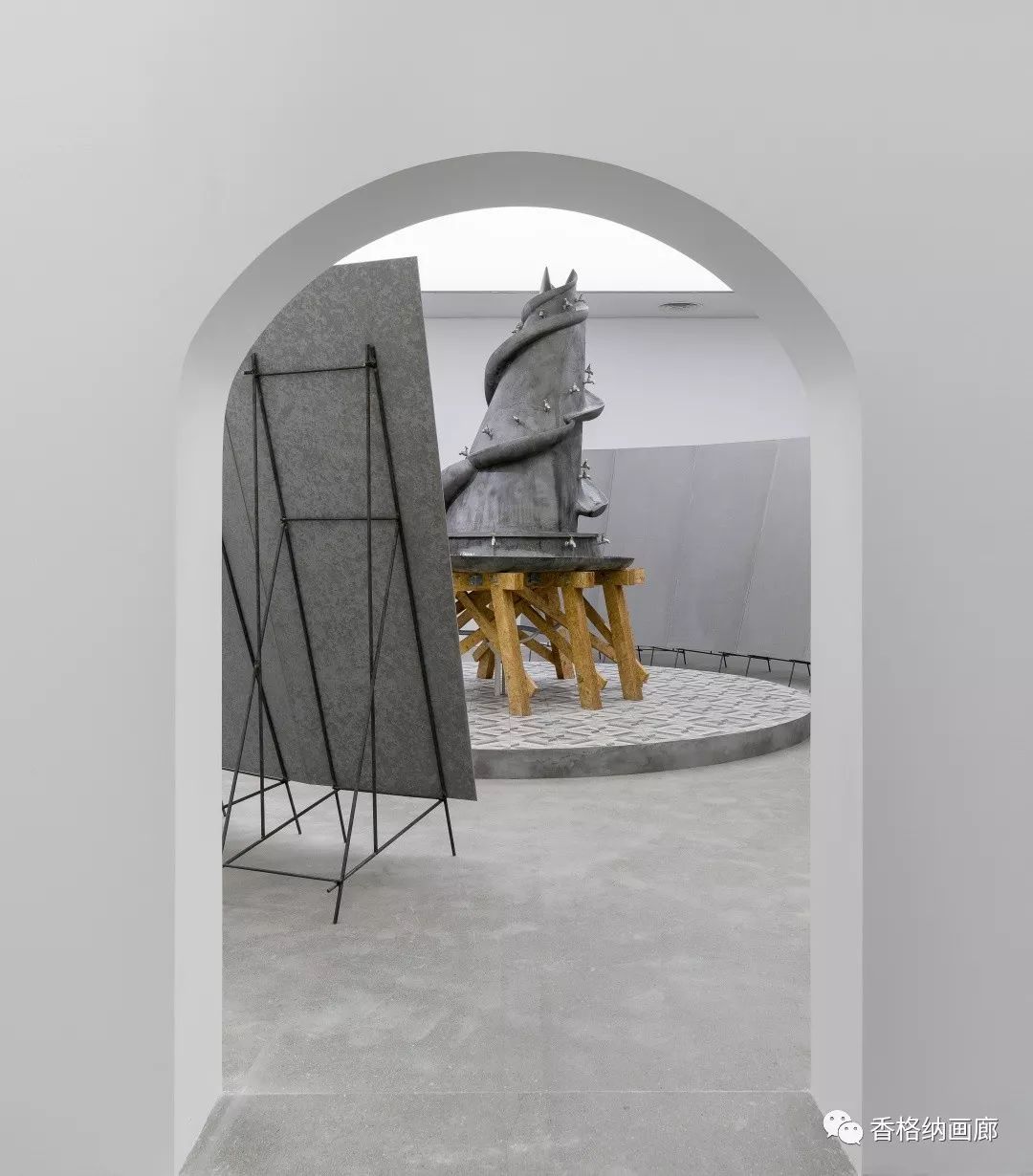
展览现场 Exhibition View
《圆括号长廊与卫生池》来自于陆垒对贴砖长廊和公共洗手池的记忆,他将原本长而直的走廊和水池进行了变形,走廊变为圆形广场,水泥板如括弧般从两侧将其围住,洗手池在造型上令人想起塔特林的第三国际纪念碑,如同一座螺旋形的高塔耸立于圆盘之上,水流通过龙头从高处流向低处,整体构造既像是对“花园中的喷泉”这一经典造园景观的戏仿,又像是对“广场-纪念碑”这一集体主义历史符号的追悼。同时艺术家也尽可能地保留了两者的使用功能,观众可以沿着巨人的足迹自由漫步走廊或是在水池边洗手,直接地用身体去感触只存在于幻想中的神秘场景。
"The Parentheses Corridor and Hand Washing Basins" comes from Lu Lei’s childhood memory of tiled corridors and public basins. He altered the shapes of long and straight corridor and basins, transforming the corridor into a circular square surrounded with cement boards that form brackets. The hand washing basins are erected over a circular counter, forming a spiral tower reminiscent of Vladimir Tatlin’s Monument to the Third International. Water flows through the faucets down the spiral-shaped basins. The overall structure of this work is like a parody of the classic garden landscape of “the fountain in the garden”, or an elegy to the “square-monument” collectivist historical symbol. At the same time, the artist also retains the functional purposes of the corridor and the basins as much as possible. The audience can walk freely on the corridor, tracing the giant's footprints, or wash their hands at the basins, feeling the mysterious scenes that exist only in fantasy directly with their body.
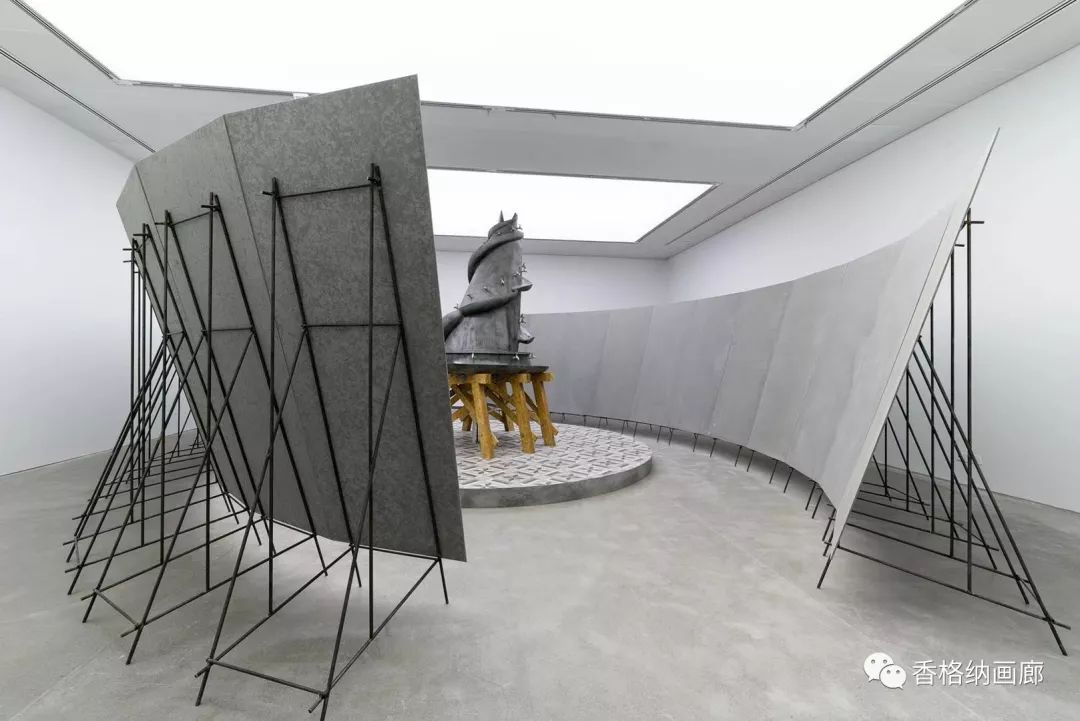
圆括号长廊与卫生池 The Parentheses Corridor and Hand Washing Basins | 2019 | 铸铝、32套水龙头、进出水系统、欧松板基座 Aluminum casting, 32 sets of faucets, water inlet and outlet system | oriented strandboard base | 365(H)*270(W)*240cm
《荒唐小说》延续了陆垒一贯的鲜明个人风格,无论是其冷酷克制的色彩表达、对于工业材质的敏感与掌控力,还是糅合了个人记忆与社会符号的神秘意象,都能让观众在第一时间辨认出艺术家的独特创作。人类总是会被自己成长期间的经历和环境所深刻影响,这种影响是潜移默化且不可抗拒的,通过对集体主义遗留物的反复引用与变形,与对其结构、秩序与质感的强调,陆垒试图跳开老生常谈的政治批判与反思,以一种“无态度”的方式去展现自己对于工业时代的理解与捕捉。
"Wander Giant" continues to show the consistent personal style of Lu Lei. The audience can easily identify the artist's unique creation at first sight, from its cold and restrained color expression, the sensitivity and control of industrial materials, and the mysterious imagery of personal memory and social symbols. Human beings are always deeply influenced by the experience and environment during their own growth. This influence is imperceptible and irresistible. Through repeated citation and deformation of collectivist relics, and the emphasis on their structure, order and texture, Lu Lei tries to break away from the old-fashioned political criticism and reflection and show his understanding and capturing of the industrial age in a "non-attitude" way.
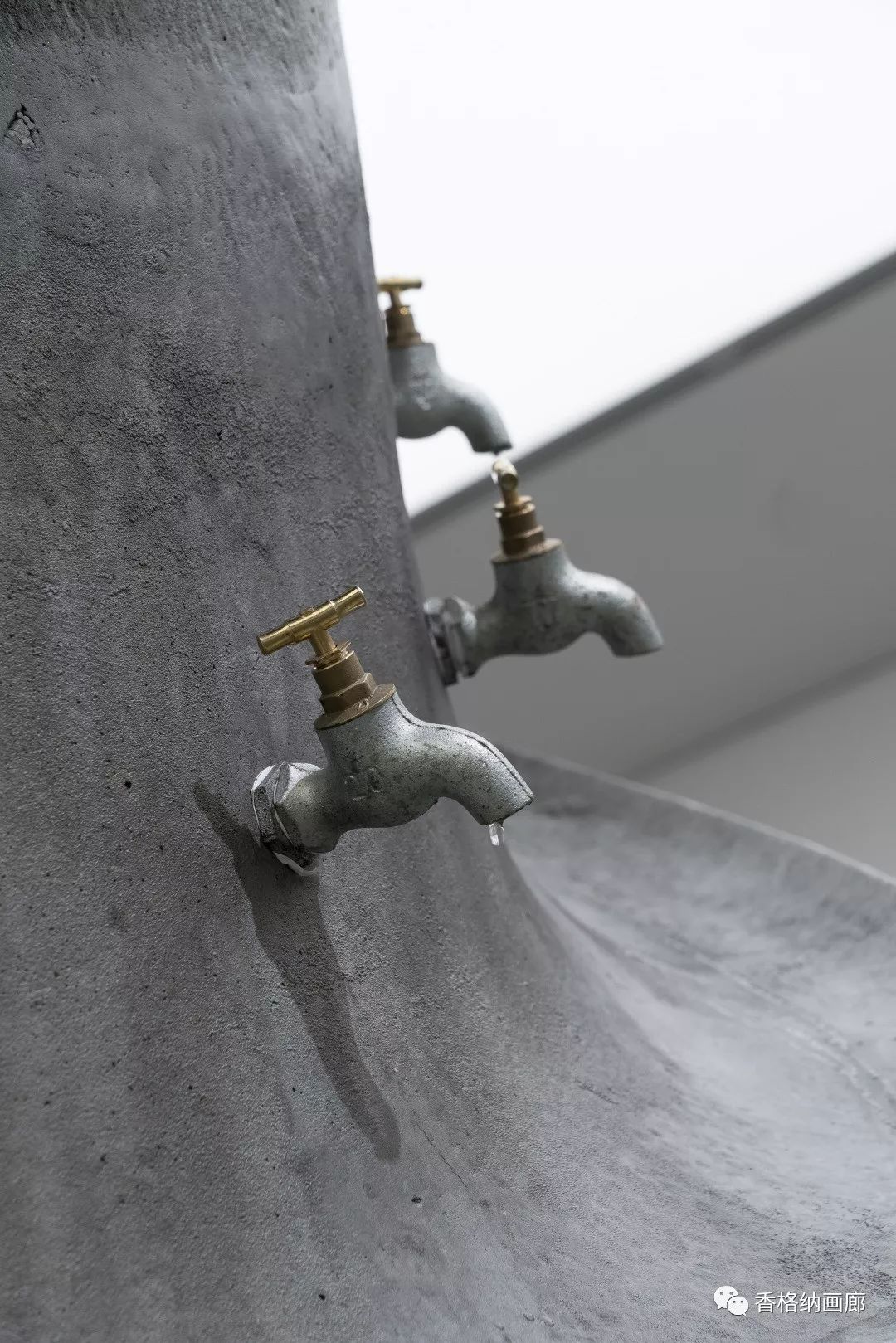
圆括号长廊与卫生池 | The Parentheses Corridor and Hand Washing Basins | 2019 | 局部 Detail
在陆垒的计划中,在上海香格纳的展览,只是《荒唐小说》的部分篇章,今后还将以展览或作品的形式进行续写。对陆垒来说,虽然当作品呈现在大众眼前时会产生各种解读,但在创作的过程中,他秉持的最重要的原则就是“不为任何,只为自己”。这令人想起小说家塞林格曾说过的,“我是为自己而写作,只为了自我的愉悦”。敬只为自己!
According to Lu Lei's plan, the exhibition at ShanghART Shanghai is just one part of "Wander Giant", which will continue to be written in the form of exhibition or works in the future. For Lu Lei, although the works will produce various interpretations when they appear in front of the public, in the process of creation, the most important principle he holds is “to create for no one but myself”. This reminds us of what novelist J. D. Salinger once said, "I write for myself, for my own pleasure." Salute to "for myself"!

©文章版权归属原创作者,如有侵权请后台联系删除
